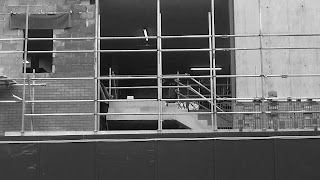Analysis of BBFC Ratings
The BBFC stands for the British Board of Film Classification. They are an organisation that gives films age ratings to allow people to know whether a film is suitable or not. There are several age ratings, and the content of the movie determines its rating. However, the guidelines are not especially strict, and are generally only enforced in cinema viewings and DVD sales. The movies someone watches is entirely up to them or their parents/guardians. Here are the guidelines for age rating movies:
U
 U stands for Universal, and can be watched by all. Most films with a 'U' rating are made for young children, generally under 4 years old. It may include:
U stands for Universal, and can be watched by all. Most films with a 'U' rating are made for young children, generally under 4 years old. It may include:
- VERY mild language (such as damn)
- VERY mild sexual behaviour (such as kissing or hugging)
- VERY mild violence and threats, and a good outcome is always assured
- No dangerous or anti-social behaviour that a child might copy
- Rarely any reference to drugs
 PG
PG
PG stands for Parental Guidance. This means that most people should be able to watch it, but some scenes my be unsuitable for young children. It suggests that parents should review the content of the film before showing younger children. Although the films are generally suitable for children, they may not have been expressly made for children. A PG film may include:
- Mild language, although generally infrequently, and with little or no aggression - it depends on context
- Mild sexual reference/behaviour, if any at all - again, it depends on context
- Mild violence or threat
- Some dangerous or anti-social behaviour may be shown (for example bullying) providing it is portrayed as wrong or unpleasant, and not glamorized
- There may be references to drugs, although these are not focused on, and are portrayed as negative

 12 and 12A
12 and 12A
12 and 12A are very similar, but are used for different reasons. Both mean that the content should be suitable for people aged 12 and over. 12's are used for DVD ratings, and only people over 12 can buy them. 12A is used for cinema releases, and means that under 12s can enter if accompanied by an adult. A 12/12A film may include:
- A pleasant tone, as if a film includes the things needed for a 12, but has a dark or unpleasant tone, then it may be given a higher rating
- Strong language, although like the PG rating, it depends on context and frequency. Mild/moderate language may be used and is generally more acceptable
- Sex, nudity, and sexual behaviour may be allowed if it is used briefly and discreetly
- Moderate violence is allowed, although details of violence (such as gore) should be minimal.Occasional strong violence may be permitted if it can be justified and makes sense in the context
- Some dangerous or anti-social behaviour may be shown, providing there are no/few details, and they are presented in a way that children are unlikely to imitate. Discrimination should not be shown unless it is clearly condemned
- Drugs may be used, but they should not be glamorized or shown in a way that instructs the viewer on how to use them
15
15 films are made for 15 year olds and higher. They include things that are not suitable for children or younger teens. 15 films may include:- Strong language, as frequently as desired, and occasional uses of the strongest language. However, aggressive or frequent uses of the strongest language may not be permitted
- Sexual behaviour and nudity is allowed, although details are not to be shown, and especially crude references may not be allowed
- Strong violence can be shown, although there are still some very strong violent acts that are not permitted
- Dangerous behaviour may be shown, although details should not be dwelt on
- Drugs can be shown, although they should not promote drug-taking. More accessible substances (eg. legal highs) should not be shown
18
 18 films can only be seen by adults. They are not suitable for children or teenagers in any way. They may include:
18 films can only be seen by adults. They are not suitable for children or teenagers in any way. They may include:- Any language - there are no limits whatsoever
- Sexual behaviour is permitted as long as the film is not a sex work (a film whose purpose is to arouse). There are a few things that are not allowed
- There can be as much violence and gore as desired
- Although most things are allowed, extreme dangerous behaviour that may have a negative effect may not be allowed
- Drugs can be shown providing the whole film does not encourage drug misuse


















